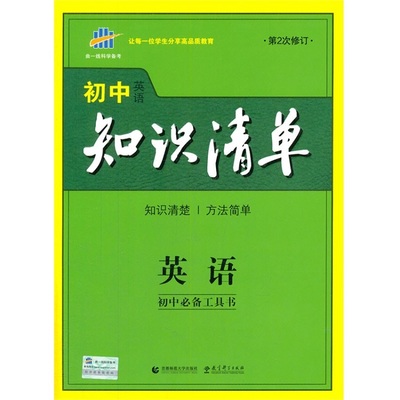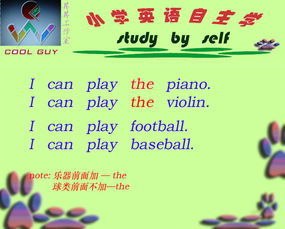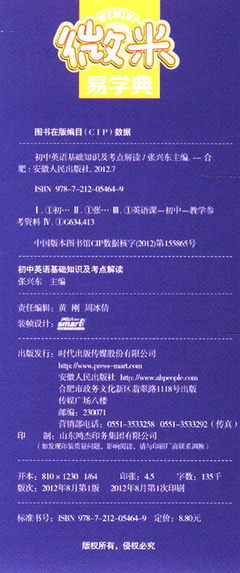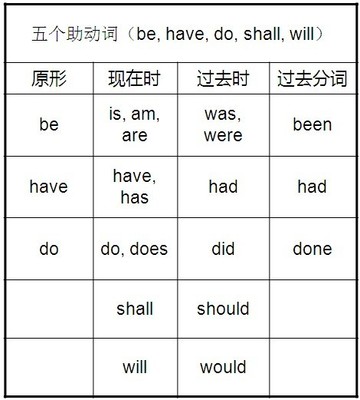冠词用法小结及练习
不定冠词的用法:
1.表示“一个”、“某一个”、“ 每一”、“再一,又一”、或“同一,相同”等
Eg. Rome is not built in a day.
AMr. Smith is waiting for you at the school gate.
Heusually works eight hours a day.
Youcan try it a second time if you fail.
They are of an age./ Birds of a feather flockstogether.
2.泛指某一类人或物,意为“任何一个,任一”
Eg: A squarehas four sides.
3.当物质名词具体化表示“一(类、阵、份)”等;抽象名词具体化为“……的人或者事”时
Eg: Green teais a wonderful tea.
Wedon’t have much rain here, but last night we had a heavyrain.
Reading is a pleasure for me.
Themeeting is a great success.
4.表示季节、月份、日期、三餐的名词,或表示世上独一无二的物体名词前有形容词修饰时
Eg: We have aevery cold winter last year.
This happened on a rain Sunday towards the end ofMay.
Wehope we can see a full moon tonight.
5.源于动词的名词与take/have 连用时
Take a look;take a walk; have a break; have a visit to…
6.用于某些固定词组中
All of asudden; as a matter of fact; as a result; as a rule; as a whole; ata distance; in a way; in a hurry; in a sense; in a word; do sb. afavour; have a good time; have a word with ; go for a walk; make adifference; make a fool of oneself; make a living; pay a visit to ;take an interest in; tell a lie; a good/wise knowledge of; adanger/threat to sb.; come as a surprise/shock; wish sb. a MerryChristmas…
定冠词的用法:
一:普通名词前加定冠词的用法
1.表示特定的人或物,上文中提到的人或物,说话双方都熟悉的或能领会的人或物。
The pen onthe desk belongs to the girl standing besideBetty.
Let’s go tothe station to meet him.
2.用于单数可数名词前,表示类别,整个族类或某项发明
The dolphinis an intelligent animal.
The compasswas invented in China about 2000 years ago.
3.用于表示方位、自然现象的名词前
The cold windfrom the north contributed to the drop of the temperature../ Turnto the right.
注:这些词与形容词连用时常用不定冠词。如:a fair wind顺风
4.表示世上独一无二的事物前。
thesun/earth…
注:有形容词修饰时要加不定冠词。如:a full moon; a bluesky
5.表示乐器的名词前
6.用于某些形容词前表示一类人或物
the poor; therich; the old; the young; the living; the dead; the wounded; thedeaf; the blind; the learned; the aged; the unemployed the accused;the elderly…
7.用于复数姓氏前表示一家人或夫妇二人
8.表示世纪、年代的名词前
in the20th century; in the1980s
9.用于序数词或形容词的最高级前; 或有only, very, same, right,just等的名词前
He was theonly person who was invited to the ball in hisoffice.
10.介词by表示计量时,其后表示“时间、长度、体积、面积”
Pencils aresold by the dozen.
You get paidby the hour.
11.表示“抓、打人的某身体部位”时,身体部位的名词前要加定冠词
The womantook me by the arm.
12.用于后面带有修饰语句(介词短语、不定式短语、分词短语或定语从句)的名词前
Tokyois the capital ofJapan.
He worked inthe factory which lies in the east of the city.
13.用于某些 固定短语或句式
In the year2008; in the morning/afternoon; in the beginning; in the end; atthe beginning of; at the end of; at the back of; in the middle of;in the center of; in the distance; at the age of; at the foot of;at the top of; on the edge of; by the way; by the end of; in theform of; the other day; be in the habit of; have/form the habit of;take the place of; to the point; on the contrary; on the otherhand; for the time being; in the long run; on the decline; on themarch
二: 专有名词前加定冠词的情况
1.用于江河、湖泊、海洋、海峡、海湾、群岛、山脉、沙漠等专有名词前
2.用于由普通名词和专有名词构成的国家、党派、组织、机构、公共建筑物或历史古迹等前
the UnitedStates; the Chinese Communist Party; the World Trade Organization;the Great Wall…
3.用于报刊,杂志、会议、条约、时期、朝代、历史事件等专有名词前
the People’sDaily; the Times; the Atlantic Pact; the Middle Ages; the MingDynasty
4.用于表示民族、国籍的专有名词前
the British;the Chinese
零冠词的用法:
1.复数名词、抽象名词或物质名词表示泛指时
Failure isthe mother of success.
Paper is madefrom wood.
2.表示季节、 月份、日期、星期的名词或表示节假日的名词前
in spring; onSunday; in January; on Christmas; …
注:in the spring of 2006; the Spring Festival/ theMid-Autumn Festival
3.表示三餐、体育运动、学科、运输或通讯方式的名词前
Havebreakfast; play basketball; I like English; by bus; bytelephone…
4.表示人名、地名、国名、街道名、大学、公园、车站、机场、港口、广场、桥梁等前
注: the University of Toronto; the Philippines; theNetherlands
5.表示职务、官衔的名词做表语、同位语、补语时
Cook wascaptain of the ship.
The presidentwill come to visit our school.
6.在turn/ go作“变为,成为”,其后做表语的名词不加冠词;当as引导让步状语从句时,从句中做表语的名词要放在as前,且不加冠词;在以“名词+介词短语”构成的独立主格结构中,名词前不加冠词
He used to bea medical student before he turned writer.
Child as heis, he knows a lot.
A man ranover, sword in hand.
7. 当man作“人类”、space作“太空”、nature作“自然界”、society 作“社会”、heaven作“天堂、天国”时不用冠词
8.在称呼语前不加冠词。
Come in, boy.What are you doing, mum?
9.在某些固定词组中
athome; write in pencil= write with a pencil
atdaybreak/surprise/dawn/noon/dusk/sunset/sundown/night
dayand night; day after day; day by day; hand in hand; side by side;from top to bottom; from beginning to end; from east to west; frommorning till nigh
在一些短语中,有无冠词意义大不相同
byday在白天;by theday 按天计算
in caseof 如果,万一;in the case of 就……来说
in chargeof负责,管理;in the chargeof 由……负责
go tochurch/school去作礼拜/去学习;go to thechurch/school到教堂去/学校去
out ofquestion毫无疑问;out of thequestion不可能的
注:有些短语意义一样,但写法却不同。
On the whole= as a whole大体上,就整体来看
take… for example= take … as anexample 以……为例
冠词的特殊位置
1.不定冠词在感叹句中
What a lovelyday it is! = How lovely a day it is!
2.不到冠词与such, so, as, too连用
He is such afamous writer that…= He is so famous a writerthat…
This is asdifficult a problem as the one we met yesterday.
It’s tooexpensive a car for me to afford.
3.不定冠词与half, many, quite,rather连用时
half a dozenof eggs; half an hour
many ateenager
quite a goodidea/ rather a cold winter
注:an hour and a half, one and a halfhours
4.定冠词与all, both, half, double等连用
All thestudents feel they are under too much pressure.
Half theaudience were bored with the movie.
I paid doublethe price.
实在演练:
1.(2010高考英语江苏卷,21)Thevisitors here are greatly impressed by the fact that people fr om all walks of lifeare working hard fornew Jiangsu.
A.不填;aB. 不填;theC. the;aD. the;the
2.(2010高考英语重庆卷,27)Everything comes with price;there is no such thingas free lunch in the world.
A. a, aB. the, / C.the, aD. a, /
3.(2010高考英语浙江卷,2)Manylifesty le patterns do such __g reat harm to health that theyactually speed up __weakening of the human body.
A.a; /B. /; theC. a; theD. /; /
4.(2010高考英语四川卷,2)Inmost countries, a university degree can give you flyingstart in life.[来源:Zxxk.Com]
A. the; aB. the; 不填C.不填; 不填D.不填;a
5.(2010高考英语山东卷,22)If wesit near _______ front of the bus, we’ll have _______ betterview.
A. 不填;theB. 不填;aC. the; aD. the;the
6.(2010高考英语辽宁卷,22)Thereare over 58, 000 rocky objects in _______ space, about 900 of whichcould fall down onto _______ earth.
A.the;theB. 不填; theC.the; 不填D.a;the
7.(2010高考英语福建卷,21)It’sgoodfeeling for people to admire the shanghai world expo that gives them
pleasure.
A.不填,aB. a,不填C. the , aD. a, the
8.(2010高考英语北京卷,35)Firstimpressions are the most lasting. After all, you never get
second chance to makefirstimpression.
A. a; theB. the; theC. a; aD. the; a
2011冠词
1.(2011•全国II)16. As he reached_____front door, Jack saw ______strange sight.
A.the;不填B. a; the C.不填a D.the; a
2.(2011•陕西卷)13.As is know toall,___ People’s Republic ofChina is___Biggest developing country in theworld.
A.the;不填B. 不填 ;theC. the ;theD. 不填;不填
3.(2011•四川卷)18.Dr.PeterSpemce,____ headmaster of theschool, told us,_____ fifth of pupils here go onto study at Oxford and Cambridge.
A.不填;AB.不填;TheC.the;TheD.a;A
4.(2011•江西卷)22.------It’s saidJohn will be in a job paying over 860,00 _____ year
-----Healso get paid by _____ week.
A. the;theB. a;theC.D.a;a
5.(2011•全国新课标卷)33.It is generallyaccepted thatboy must learn to stand up and fightlike man.
A. a;aB. a;theC. the;theD. a; 不填
6.(2011•浙江卷)2.Experts think that____recently discovered painting may be _____ Picasso.
A.the.不填B.a;theC.a;不填D.the;a
7.(2011•山东卷)21.Take yourtime-it’s just_____short distance from hereto_____restaurant.
A.不填;theB. a;theC. the;aD.不填;a
8.(2011•重庆卷)26. In communication,a smile is usually _____ strong sign of a friendly and _____ openattitude.
A. the,/B. a, anC. a,/D. the, an
ADBDCBBCDCABADBC
 爱华网
爱华网


